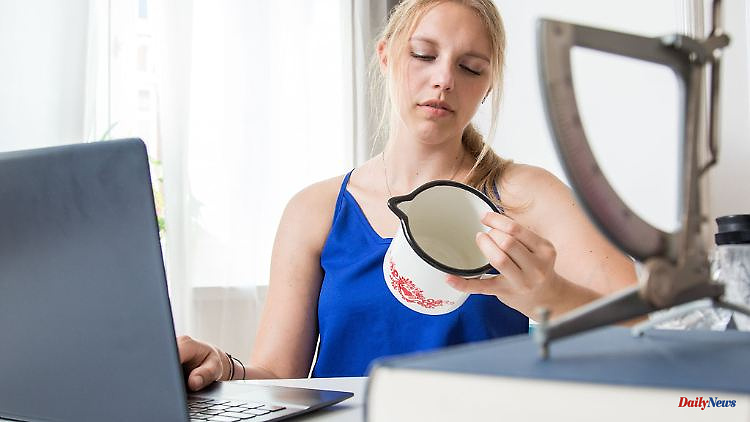Whether from the inheritance or from your own attic: If you want to sell special items, you run the risk of being ripped off if you don't know. This is better.
Furniture, art, jewellery, coins, porcelain or vintage clothing: there is a wide range of valuable finds or collectibles that can turn up when you are clearing out or selling a household.
If you want to turn them into money, you should either already have an idea or do some research beforehand. Otherwise the yield may be far below the actual value.
Step 1: Take stock
The first step is therefore to take stock. Art historian Friederike Werner advises that the noble piece should be analyzed in detail. For example, if there is a clearly legible signature on the object, a lot can be learned about it. Research on the Internet or - in the case of very old pieces - in the library usually provides initial information on the background of the object.
If there is no signature, it is worth taking a technical look at the object: what kind of object is it? What was it used for? What is the material condition like? What are the dimensions and weight? Are there any special features? "I encourage you to do some detective work. Take a magnifying glass and take a close look," says art expert Werner.
So if you have inherited a possibly precious piece of jewelry, you should research the material from which the jewelry was made. Is there a small stamp somewhere? How big and heavy is the jewelry? This inventory is essential, because this is the only way to approach the value of the item.
Sarah Geiker from Ebay Germany recommends that if you don't get anywhere yourself, you can involve collector communities or get an expert appraisal.
Step 2: Search for comparison objects
The next step is to find pieces that are as comparable as possible in order to get a rough idea of the value of the item. This can initially be a completely unstructured Internet search. For certain items, such as porcelain, there is a wealth of catalogs on the Internet that can easily be found using search engines.
It can also be worthwhile to look for something similar in well-known online auction portals. According to Sarah Geiker, you can find a comparison object for almost every unique item using the extended search in completed offers. Because they are widely known and used, such portals are often the first point of contact for collectors and later offer good sales opportunities.
If you are looking for comparable objects to a work of art, you may be better off with special online art dealers. There you can often have price estimates made by experts. Although this is subject to a fee, it can provide a reliable and serious classification within a few days. In view of the prices, however, it is really only worthwhile for high-quality or well-known art.
Step 3: Involve auction houses and experts
In general, it can be helpful to request an expertise for objects. Not everything has to run over the internet. In auction houses you can ask directly whether there is interest in the special piece. If this is the case, the houses usually even give an assessment free of charge. A little research in advance to find out which auction house specializes in which topic is still recommended. Auction houses offer the advantage that they know who is collecting what and have the appropriate contacts.
Specialists can also see at a glance which direction an object is going and know where to look. You recognize discrepancies more quickly, for example if it is only an imitation, kitsch or worthless mass-produced goods.
Step 4: Consider resellers and markets
If you want to sell several items, such as fine designer clothing, it can be worth contacting the local retailer or inquiring at the second-hand shop. Selling on your own at flea markets, antique markets or trade fairs can also be an option. The fees here are comparatively manageable.
However, one should realize that customers often only stop by at such markets to pass the time. High prices are unlikely to be achieved. "Objects from 30 to 80 euros can usually still be sold, but beyond that it becomes difficult," says art expert Thomas Faessler. "The ambience here just doesn't fit for high-quality and higher-priced items."
Step 5: The actual sale
In general, it is such a thing with sales. Unfortunately, knowing the approximate value of a unique item does not mean that it will automatically be sold. "Just because an object is worth something doesn't mean someone wants it right away," says art historian Friederike Werner. Even with high-quality objects, the sale can be lengthy. In addition, you have to be prepared for the fact that in the end the sales prices will be significantly lower than the estimated value.
That's why it's good to be clear about your personal pain threshold: At what price do I want to sell? It may be worth keeping the unique piece for yourself and keeping it in loving memory. In the end, some objects have more of a personal sentimental value than a real sales opportunity.












